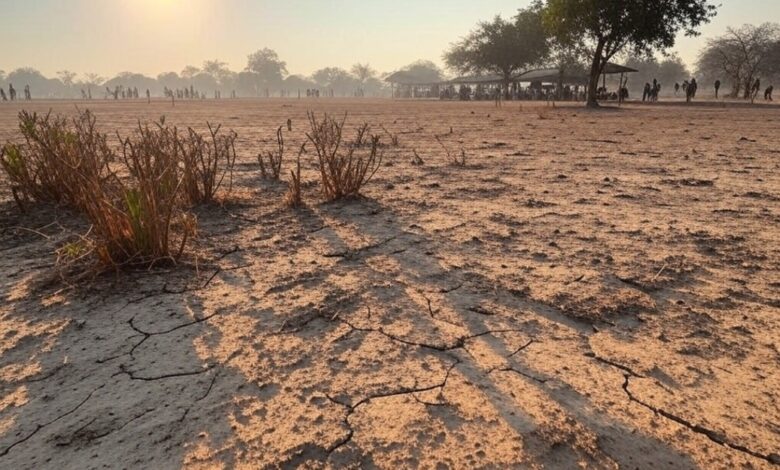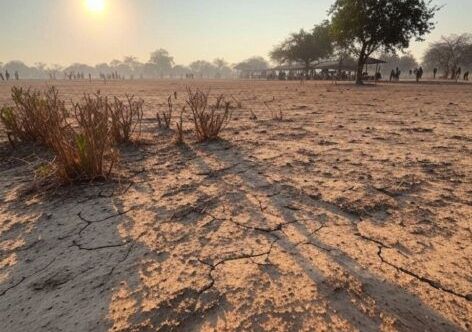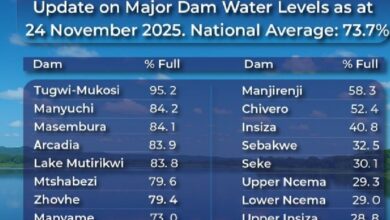Extreme heat wave ravages Hwange: A tale of resilience amid climate crisis


Peter Moyo
HWANGE – The town of Hwange is currently grappling with one of the most severe heat waves in recent memory, with temperatures soaring to an unprecedented 44°C, according to the Meteorological Services Department (MSD).
This heat wave, forecasted to last over 11 days, marks a stark indicator of the escalating climate crisis affecting this region. The heat in Hwange has not only shattered local temperature records but also highlighted the vulnerabilities of this community and its surrounding wildlife to climate change.
Historical data shows that such extreme temperatures were rarely seen in the 1980s, but over the last decade, these events have become increasingly frequent and intense. The current heat wave, with daily averages between 36°C to 44°C, is a grim reminder of how climate change can transform weather patterns.
For Hwange’s farmers, this period is fraught with concern. The heat, combined with intra-seasonal dry spells, has severely impacted crop yields.
According to the Climate Change Knowledge Portal, Zimbabwe’s agricultural sector, vital to its economy, faces significant risks from such climatic events. Recent reports suggest a potential 40% reduction in certain crop yields due to extreme weather conditions, affecting food security and local livelihoods.
Health professionals are on high alert, with warnings issued about the dangers of heat-related illnesses. The World Health Organization (WHO) defines a heatwave as an extended period of excessively hot weather, which can lead to an increase in heat-related deaths. In Zimbabwe, where health infrastructure can be strained, this wave poses additional challenges.
Mrs. Ncube, a resident of Hwange, shares her ordeal: “It’s like we’re living in an oven out here. My garden, which was once lush, is now a testament to the harshness of this heat. We’re conserving water as best we can, but the children are coming home from school exhausted, their cheeks flushed from the sun.”
The impact on Hwange National Park’s wildlife is equally alarming. The park, home to over 100 000 elephants, faces habitat shrinkage due to climate change, with projections indicating a 40% reduction by 2050. Elvis Mutero, a wildlife expert, notes, “We’re seeing animals crowded around the few water sources left, which isn’t natural behavior. The heat is pushing them towards human areas, increasing conflicts.” The Zimbabwe National Parks and Wildlife Authority (Zimparks) has had to augment water supplies with over 105 boreholes, many solar-powered, yet they struggle to meet demand.
In response to this crisis, the community has rallied together. Local initiatives are focusing on climate adaptation, including setting up hydration points, promoting heat safety awareness, and adjusting daily routines to avoid the hottest parts of the day. The National Climate Policy of Zimbabwe, enacted in 2017, is guiding these efforts, emphasizing adaptation and risk management.
With forecasts predicting no immediate relief, the situation underscores the urgent need for adaptive measures. The World Weather Attribution group has noted that climate change has made such heat waves 10 times more likely and 4°C hotter, suggesting that without significant global action, these events will become the norm rather than the exception.
For those planning to visit the region, including the famous Hwange National Park, checking weather updates and preparing with adequate hydration and cooling strategies is advised.
This heat wave serves as a poignant reminder of the broader implications of climate change, urging both local and global communities to act swiftly in fostering resilience against such climatic adversities.





